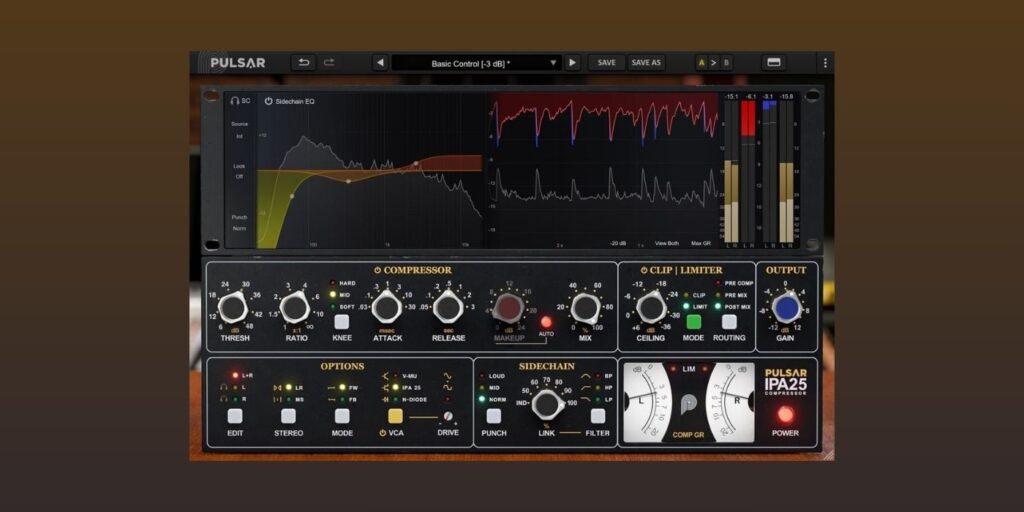Pulsar Audio has released IPA 25, a multi-VCA dynamics processor for macOS and Windows, launched at €99 intro price (regular €149).
IPA 25 is a modern take on the classic API 2500 RMS/VCA bus compressor with extra signal-flow options, harmonics, and metering. It’s the kind of “do-a-lot from one window” compression tool that I like using on drum and mix buses.
What sets IPA 25 apart is that it keeps the core VCA envelope constant while letting you swap the gain-reduction circuit for different harmonic “flavors”: the original VCA model, a tube-leaning V-Mu, and a grittier diode-style option.
A Drive control calibrates how hard each circuit saturates, and you can run the compressor in feed-forward or feedback detection for subtle feel changes. Swapping the character without rebalancing your settings is quick and super useful when you’re hunting for punch versus glue.
The sidechain is unusually deep for this style of compressor. You get a “Punch” selector (Norm/Mid/Loud) that tilts detector emphasis toward the highs, which helps keep the low end stable on dense material.
There’s also a four-band sidechain EQ, external key input, stereo link control, and link-filtering (HP/LP/BP) to decide whether transients, sustained energy, or mid-rate changes are shared between channels. In practice, it means you can keep the centre image steady on the mix bus while letting fast percussive hits link more or less than the body of the track.
I also appreciate that peak control is built in. A dedicated Clip/Limiter section can sit pre-comp, pre-mix (inside the parallel path), or post-mix.
Clipping is great to shave spikes or add bite before the detector; the Limiter mode is meant for transparent “ceiling” work and pairs well at the end of a bus chain. If you rely on parallel drums, putting the clipper in Pre-Mix to toughen only the wet path is a neat workflow saver.
Timing is flexible beyond the standard attack/release settings. You can shift the detector in time with Look-ahead (to catch stick hits precisely) or Look-behind (to let the attack through and compress the sustain), and the on-plugin visuals make it easy to see what the envelope is doing.
Under the hood, IPA 25 runs with a default reported latency (used for look-ahead and the transparent limiter). Your DAW compensates automatically, but there’s a Zero-Latency mode for tracking that disables look-ahead, the Limiter mode, and real-time oversampling—handy when performers are monitoring through the plugin.
I also like that the interface keeps things streamlined for everyday use and lets you dig deeper if you need more advanced options. You get a clear control rack at the bottom (threshold/ratio/knee, auto-makeup, wet/dry, output), plus a visualization rack at the top for sidechain listen, EQ, and meters.
If you enjoy A/B’ing states, the global toolbar (undo/redo, A/B, preset management, stepped knobs, oversampling per real-time/offline) is consistent with other Pulsar plugins.

If you already have a go-to VCA bus comp, IPA 25 earns a spot by letting you shape why the gain reduction happens with goodies like detector EQ, Punch modes, and link filtering. You can also decide what its harmonics look like (switchable VCA character), without juggling multiple plugins.
For me, that’s pretty cool because there’s less window-hopping and you basically get multiple tools in one.
IPA 25 runs on macOS and Windows in VST2, VST3, AU, and AAX formats, and uses iLok for licensing (machine, dongle, or Cloud). Oversampling options are available (with separate offline settings) if you’re driving the non-linear stages hard.
Product page: IPA 25 (€99 intro price)
More:
Last Updated on October 6, 2025 by Tomislav Zlatic.




